Pablo Alvarez
Posts by Pablo Alvarez
![Spine and front cover of Gulielmus Durandus (ca. 1230-1296) et alii. [Tractatus varii] Paper. Germany 15th c.](/sites/default/files/styles/medium/public/chainbinding.jpg?itok=jTMtwzS6)
We are pleased to announce the launching of our most recent Omeka exhibit: Marks in Books. In this online exhibit, the term "marks" refers to physical elements that have been added to manuscripts and early printed books throughout time, that is, from the instance when they were being made until they arrived to our shelves. Mostly, these marks were not intended by the authors, scribes and printers as they originally envisioned their books, but were later included in the form of corrections, readers' marginalia, drawings, and traces of subsequent ownerships as shown in bookplates and bindings. These marks are extraordinary witnesses offering unique information on various aspects of book history such as production, textual transmission, reception, and provenance history.
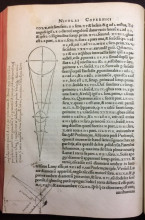
You are invited to see highlights from the library's extraordinary collection of manuscripts and early printed books describing the early history of astrology and astronomy. Mark your calendars for this Tuesday (3/12/19; 4:00-7:00 pm). The selection will range from ancient papyri to richly illustrated books that made possible the scientific revolution in Europe in the sixteenth and seventeenth centuries, including first editions of the works of Copernicus, Galileo, and Kepler.
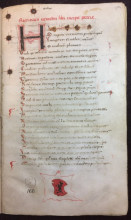
When cataloging this fifteenth-century Italian manuscript, I saw that some of the pages have been damaged by brushing a chemical reagent on some areas that were difficult to read. While in the short term this substance was designed to make traces of ink more legible, the long-term impact on the manuscript is disastrous as shown in the image below.
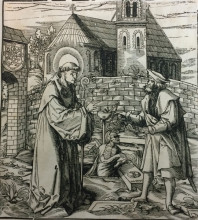
This 1799 edition of The Images of Saints from the family of the Emperor Maximilian I (1459-1519) contains for the very first time an almost complete series of the woodcuts that were originally commissioned by Maximilian I to illustrate the legends, history and genealogy of earlier saints claimed to be connected to the House of Habsburg.
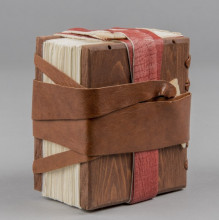
Visit us on the sixth floor of the Hatcher Library to see this exciting exhibit! It consists of a selection of historical bookbinding models from the personal collection of conservator and scholar, Julia Miller. In 2015 and 2016, Julia bequeathed her extensive model collection to the Special Collections Research Center. Now named as The Julia Miller Collection of Bookbinding Models, it includes binding replicas of ancient and medieval manuscripts in various materials and formats, including a variety of Graeco-Roman tablet models, Coptic codices from the 3rd to the 10th century AD, and medieval European, Near Eastern, and Islamic binding models from the 12th to the 17th century.
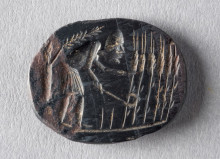
The Exhibit "The Art and Science of Healing: From Antiquity to the Renaissance" is now gone from the Kelsey Museum and the Audubon Room of the Hatcher Library, but we can still see it through the eyes of undergraduate Noah Waldman, who last semester wrote an exhibit critique for professor Aileen Das' class, "Ancient Medicine in Greece and Rome". Selected by Dr. Das, I am very pleased to post Noah's review in our Special Collections blog.
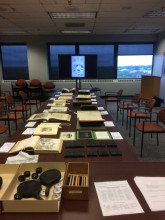
As part of last week's Enriching Scholarship events, I offered an introductory workshop on the subject of illustrations in early printed books. In brief, the participants of this session learned not only about how these extraordinary images were created but also about how to identify the details of their production by examining actual books. For each book the following question was raised: are these illustrations woodcuts, engravings, or lithographs? We all had great fun!
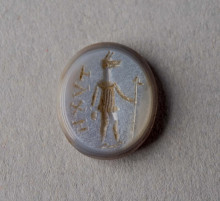
I am pleased to showcase a student critique of the current exhibit, The Art and Science of Healing: From Antiquity to the Renaissance. Students of professor Aileen Das' class, Ancient Medicine in Greece & Rome, visited this exhibit at the Kelsey Museum of Archaeology last February. They were assigned with the fascinating task of examining this display from various angles, not only from the perspective of the visitor but, more interestingly, also from the view of the exhibit curator. As I guided their visits, I tried to reconstruct for them the different stages involved in the making of this exhibit, from the original idea that I probably wrote on a piece of napkin, to the aesthetics of the display room and the painful selection of the witnesses of the story I wanted to tell: the artifacts themselves! But let us now hear Shannon's critical reaction:

We are pleased to announce the opening of a new exhibit from the Special Collections Library. It includes an extraordinary selection of magical, religious, and medical artifacts held at Special Collections, the Papyrology Collection, and the Kelsey Museum of Archaeology. These objects are an extraordinary evidence of how people coped with physical and mental ailments from antiquity through the Middle Ages and the Renaissance.
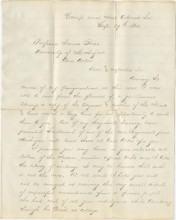
I am frequently asked by students and faculty: where do our rare book collections come from? While we have purchased many extraordinary books since the early years of the University of Michigan, many of our treasures were bequeathed by grateful alums and faculty. The reasons why they donated these artifacts are often fascinating, revealing little-known stories that shed light not only on the history of our institution but on our country at large. The book featured in this post is a rare seventeenth-century edition and Latin translation of the Homer's Iliad...